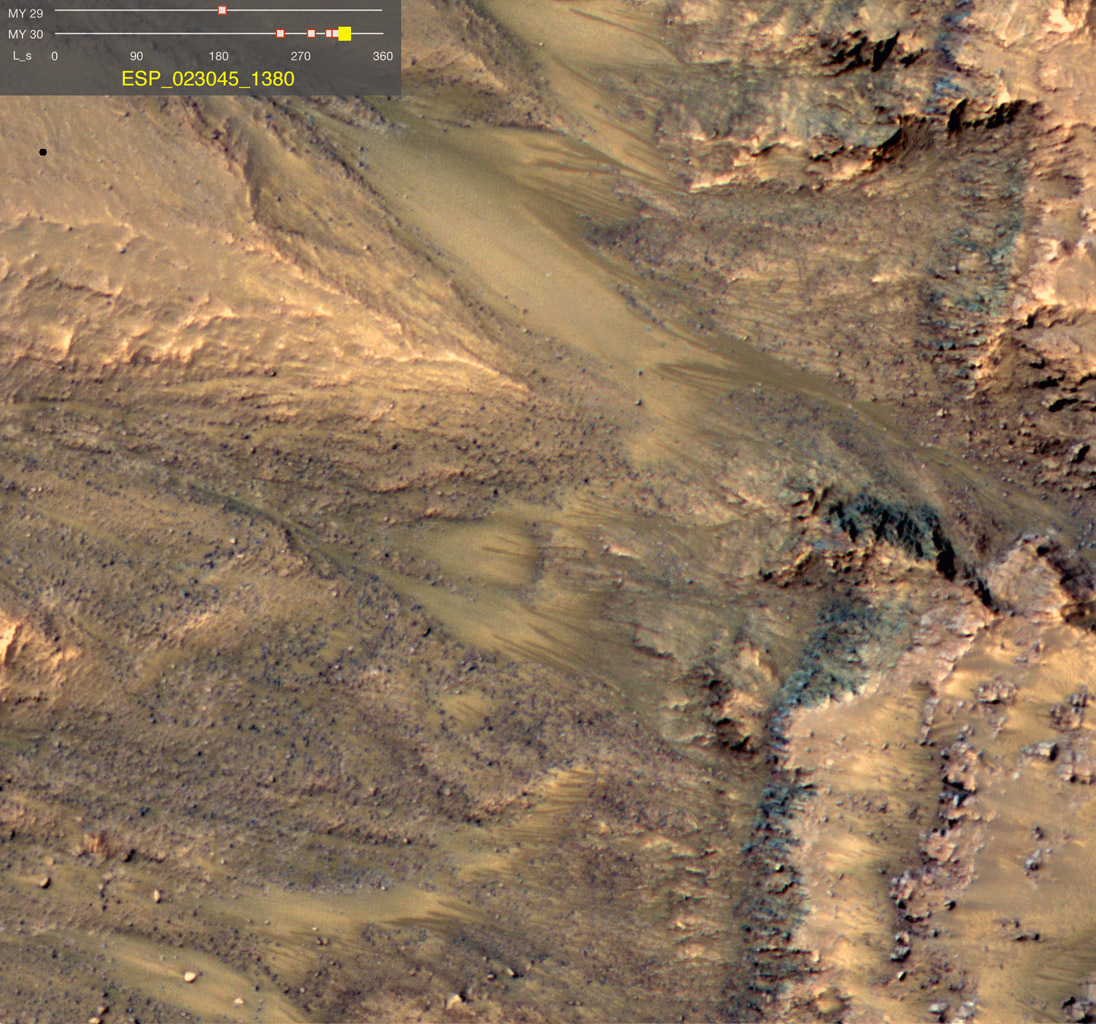Salty Mars puddles no place for life
On the surface of the Red Planet, normal bodies of water cannot exist for long periods of time under today’s conditions. It’s possible, however, that very salty “puddles” or reservoirs of liquid (“brines” in technical language) could remain stable on or just below the surface for some amount of time, especially during the Mars spring and summer months, when ice deposits thaw. Whether these puddles are suitable for life as we know it, however, remains questionable.
In 2018, reports sparked headlines that these brines might have conditions that are friendly to life after all. One factor speaking for this was that oxygen would dissolve very well in the brines under the conditions prevalent on Mars. While our neighboring planet’s atmosphere has only 0.145 percent oxygen (Earth: 21 percent), the brines might be relatively rich in oxygen and could therefore provide a foundation for life for microorganisms.
A study published in Nature Astronomy, however, now strongly damps such hopes. In a thermodynamic model of the Mars surface, researchers show that such salty puddles could exist on up to 40 percent of the Mars surface down to the equator at least for up to six hours and for more than 2 percent of a Mars year – at a depth of 8 centimeters below the surface even for up to 10 percent of the Mars year. They also show, however, that the water in these puddles would be much too cold for life, specifically down to -48 degrees Celsius. The high salt content would indeed keep the liquid from freezing, but terrestrial life could not exist under those conditions.
This also represents good news, however, at least in one respect: we don’t have to worry about contaminating Mars with terrestrial bacteria, because terrestrial bacteria could not survive those conditions (which actually means an all-clear for terrestrial space travel). However, this doesn’t mean that we don’t have to worry about killer Martian bacteria adapted for long-term survival. There’s still plenty of science left for new Mars horror novels.
